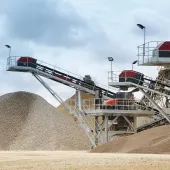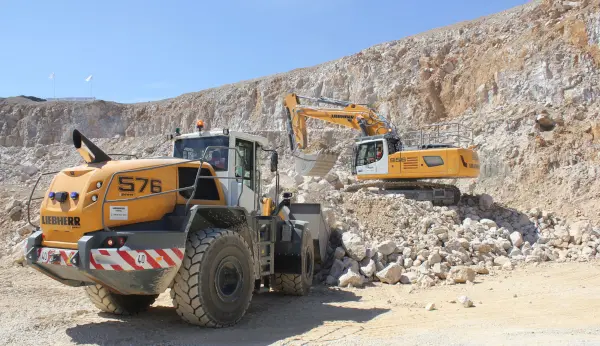Government publishes 10-year Infrastructure Strategy
Decade-long Infrastructure Strategy to deliver stability, investment, and national renewal
THE Government’s landmark 10-year Infrastructure Strategy, published today [19 June], sets out a long-term plan for how it will invest in infrastructure and ensure that funding is spent effectively and efficiently, marking a new approach to how projects are planned and delivered.
The Government says it is committed to doing things differently to deliver infrastructure and fix the failures of the past, having accepted all of the James Stewart Review’s recommendations on HS2. The Strategy provides the certainty and stability needed to attract investment, boosting British supply chains and jobs, and takes a joined-up view to improve planning and delivery across all types of infrastructure.
To support delivery of the strategy, the Government is funding at least £725 billion for the country’s infrastructure over the next decade, ensuring that public infrastructure capital funding continues to grow in line with inflation after the current Spending Review period. This funding certainty will help government and industry plan further ahead, allowing for more efficient delivery of UK wide infrastructure.
The National Infrastructure and Service Transformation Authority (NISTA), established by the Government this year, will work with partners across government and industry to effectively implement the strategy across the whole of the UK. NISTA will periodically review the progress made and work with devolved governments to ensure that infrastructure strategy across the UK is joined up.
Becky Wood, chief executive officer of NISTA, said: ‘By approaching replacement and maintenance of our infrastructure in an informed and systematic way, we can target interventions effectively and plan properly for the future.’
The funding in the 10-year Infrastructure Strategy includes: £1 billion to carry out maintenance on key transport infrastructure, including crumbling bridges, flyovers, and crossings; £590 million to start work on the Lower Thames Crossing; and £16 billion of new public investment to help build over 500,000 new homes, which will also unlock over £53 billion of private investment.
In an immediate reaction to today’s 10-year Infrastructure Strategy announcement, Chris Leese, executive chair of the Mineral Products Association (MPA), said: ‘Setting out a strategy is a good start; delivery is what matters. We look forward to the detailed project pipeline to give our members confidence. We also welcome the commitment that the Government’s investment in infrastructure will, in turn, support British jobs, including the 80,000 jobs in our sector supplying all these projects.
‘Last week the Chancellor said ‘where things are made, and who makes them, matters’ and this must apply to the supply of UK-sourced materials for infrastructure. For cement in particular, this means action on industrial energy prices, a watertight Carbon Border Adjustment Mechanism, and using public procurement to ensure a long-term future for essential domestic industries. We welcomed the announcement earlier this week on procurement and look forward to seeing it in action, supporting UK industry in delivering the infrastructure pledged today.’
Meanwhile, Construction Products Association (CPA) economics director Prof. Noble Francis said: ‘We welcome the 10-year Infrastructure Strategy and the Government’s ambitions for the UK's critical infrastructure needs over the next decade, with its intention to attract private investment in a more sustainable and realistic way than previous PFI schemes.
‘However, in order for this strategy to be useful for the construction supply chain and help make the case at board level for major investments in skills, capacity, and more efficient methods to deliver the ambitious infrastructure work within the Strategy, industry will need to know when these projects will realistically start and how long they are expected to take.
‘This essential information will hopefully be included in the Government’s Infrastructure Pipeline, which is scheduled for publication next month.’
Viki Bell, chief executive officer of the Construction Equipment Association (CEA), said: ‘We welcome the launch of the UK’s modern industrial strategy – and in particular, the long-term thinking behind it. Plant and equipment manufacturers require stability, infrastructure, and skilled personnel to thrive, and this strategy demonstrates a clear understanding of industry needs.
‘The commitment to reduce electricity costs is a potential game-changer for manufacturing. Commercial energy prices in the UK have placed firms at a real disadvantage for too long, so the proposed reductions – through both the Competitiveness Scheme and Supercharger support – could offer significant relief. As the Government consults on eligibility, we will be looking to ensure construction equipment manufacturers are included.
‘In terms of skills, we’re pleased to see investment in engineering, the establishment of technical colleges, and support for modular and hybrid training models. However, the details on levy reform remain light. We know from our members that simplifying the system and making it more flexible is crucial, particularly for smaller OEMs and the hire sector supply chain.
‘It’s also encouraging to see serious funding now targeted toward helping British firms scale up. The additional £7 billion for the British Business Bank, alongside support for Advanced Manufacturing clusters, shows an ambition to unlock capital and support regional growth. That matters for our sector, especially when bringing new safety systems, cleaner machines, and digital solutions to market.
‘While construction equipment manufacturing wasn’t named explicitly in this strategy, we hope to see it fully embraced within the Advanced Manufacturing sector plan, where it clearly belongs. Our members stand ready to support infrastructure, house building, and net-zero goals. This strategy is a positive step, and we look forward to working with government to ensure our sector is part of its delivery.’










